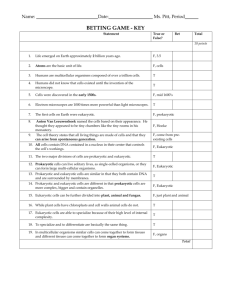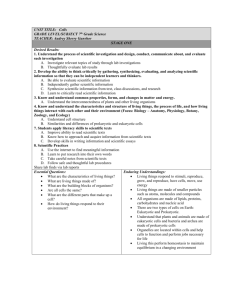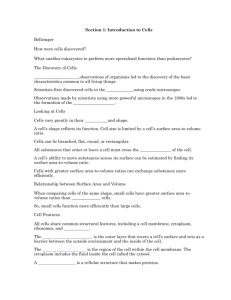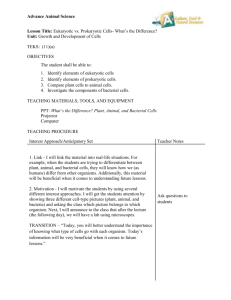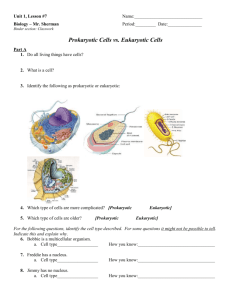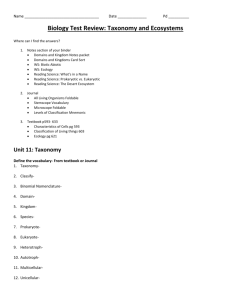Unit 4: Microscopes and Structure and Function of Cells Study Guide
advertisement
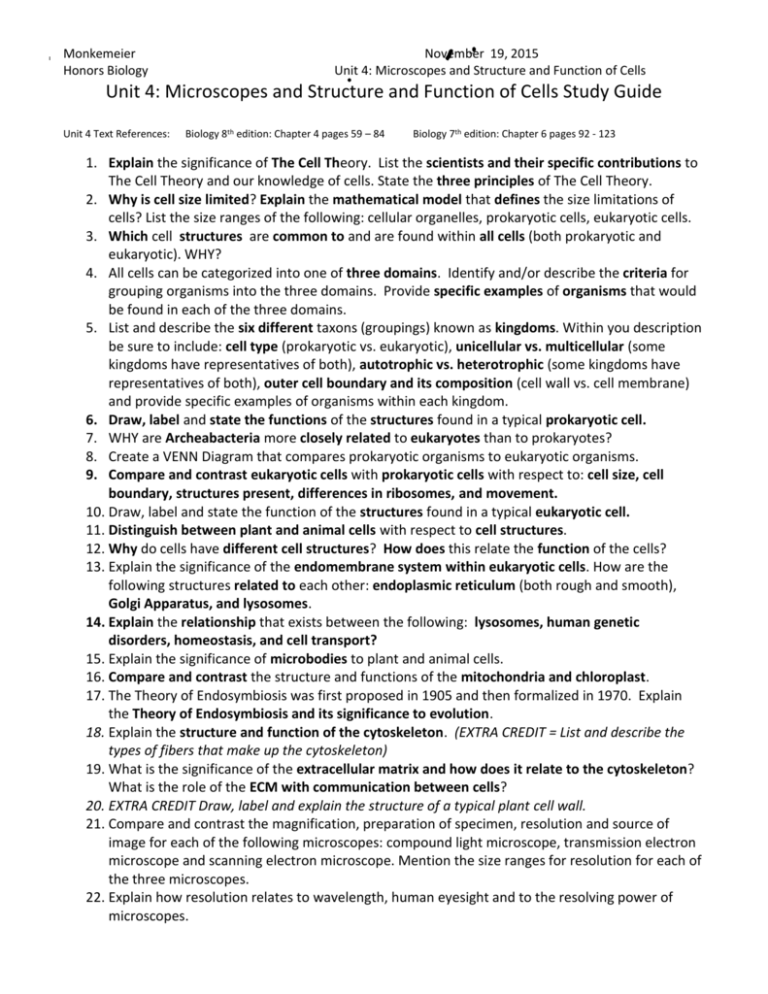
Monkemeier Honors Biology November 19, 2015 Unit 4: Microscopes and Structure and Function of Cells Unit 4: Microscopes and Structure and Function of Cells Study Guide Unit 4 Text References: Biology 8th edition: Chapter 4 pages 59 – 84 Biology 7th edition: Chapter 6 pages 92 - 123 1. Explain the significance of The Cell Theory. List the scientists and their specific contributions to The Cell Theory and our knowledge of cells. State the three principles of The Cell Theory. 2. Why is cell size limited? Explain the mathematical model that defines the size limitations of cells? List the size ranges of the following: cellular organelles, prokaryotic cells, eukaryotic cells. 3. Which cell structures are common to and are found within all cells (both prokaryotic and eukaryotic). WHY? 4. All cells can be categorized into one of three domains. Identify and/or describe the criteria for grouping organisms into the three domains. Provide specific examples of organisms that would be found in each of the three domains. 5. List and describe the six different taxons (groupings) known as kingdoms. Within you description be sure to include: cell type (prokaryotic vs. eukaryotic), unicellular vs. multicellular (some kingdoms have representatives of both), autotrophic vs. heterotrophic (some kingdoms have representatives of both), outer cell boundary and its composition (cell wall vs. cell membrane) and provide specific examples of organisms within each kingdom. 6. Draw, label and state the functions of the structures found in a typical prokaryotic cell. 7. WHY are Archeabacteria more closely related to eukaryotes than to prokaryotes? 8. Create a VENN Diagram that compares prokaryotic organisms to eukaryotic organisms. 9. Compare and contrast eukaryotic cells with prokaryotic cells with respect to: cell size, cell boundary, structures present, differences in ribosomes, and movement. 10. Draw, label and state the function of the structures found in a typical eukaryotic cell. 11. Distinguish between plant and animal cells with respect to cell structures. 12. Why do cells have different cell structures? How does this relate the function of the cells? 13. Explain the significance of the endomembrane system within eukaryotic cells. How are the following structures related to each other: endoplasmic reticulum (both rough and smooth), Golgi Apparatus, and lysosomes. 14. Explain the relationship that exists between the following: lysosomes, human genetic disorders, homeostasis, and cell transport? 15. Explain the significance of microbodies to plant and animal cells. 16. Compare and contrast the structure and functions of the mitochondria and chloroplast. 17. The Theory of Endosymbiosis was first proposed in 1905 and then formalized in 1970. Explain the Theory of Endosymbiosis and its significance to evolution. 18. Explain the structure and function of the cytoskeleton. (EXTRA CREDIT = List and describe the types of fibers that make up the cytoskeleton) 19. What is the significance of the extracellular matrix and how does it relate to the cytoskeleton? What is the role of the ECM with communication between cells? 20. EXTRA CREDIT Draw, label and explain the structure of a typical plant cell wall. 21. Compare and contrast the magnification, preparation of specimen, resolution and source of image for each of the following microscopes: compound light microscope, transmission electron microscope and scanning electron microscope. Mention the size ranges for resolution for each of the three microscopes. 22. Explain how resolution relates to wavelength, human eyesight and to the resolving power of microscopes.


